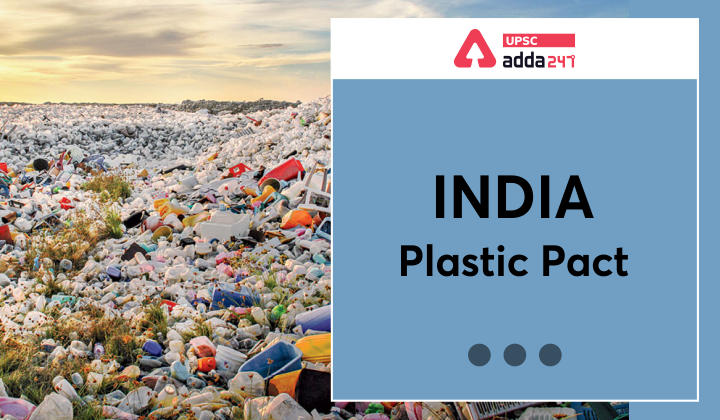Table of Contents
Relevance
- GS 3: Conservation, environmental pollution and degradation.
Context
- India has become the first country in Asia to develop a plastic pact collaboration with Confederation of Indian Industries (CII) and World-Wide Fund for Nature (WWF).
Key points
- India Plastic Pact, on the lines of European plastics pact, will be a platform to promote a circular system for plastics.
- The platform was launched by British High Commissioner to India, Alexander Ellis.
- The India Plastics Pact is an ambitious, collaborative initiative that aims to bring together businesses, governments and NGOs to reduce, reuse, and recycle plastics in their value chain.
- This plastics pact model focusses on addressing the barriers to circularity in the plastic packaging sector.
Plastic Waste Management Amendment Rules, 2021
Targets
- The Pact defines a list of unnecessary or problematic plastic packaging and items and take measures to address them through redesign and innovation.
- 100% of plastic packaging to be reusable or recyclable.
- 50% of plastic packaging to be effectively recycled.
- 25% average recycled content across all plastic packaging.

Objectives
- The Pact aims to transform the current linear plastics system into a circular plastics economy that will help achieve the following objectives
- Reduce the use of problematic plastics in India.
- Retain valuable materials in the economy for use in other products.
- Generate jobs, investment and opportunities in the plastics system in India.
- The India Plastics Pact aims to promote public-private collaborations that enable solutions to eliminate the plastic waste problem in India and bring innovation to the way plastic is designed, used and reused.
Microplastic Pollution: Severity of the Problem, Its Impacts and Suggestive Measures
Plastic waste in India
- India generates 9.46 million tonnes of plastic waste annually.
- Out of the total waste generated, 40% is not collected.
- About half of all plastics produced in the country are used in packaging, most of it is single use in nature.
What is circular economy?
- The circular economy is a model of production and consumption, which involves sharing, leasing, reusing, repairing, refurbishing and recycling existing materials and products as long as possible.




 TSPSC Group 1 Question Paper 2024, Downl...
TSPSC Group 1 Question Paper 2024, Downl...
 TSPSC Group 1 Answer key 2024 Out, Downl...
TSPSC Group 1 Answer key 2024 Out, Downl...
 UPSC Prelims 2024 Question Paper, Downlo...
UPSC Prelims 2024 Question Paper, Downlo...




